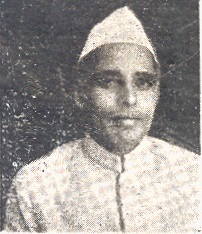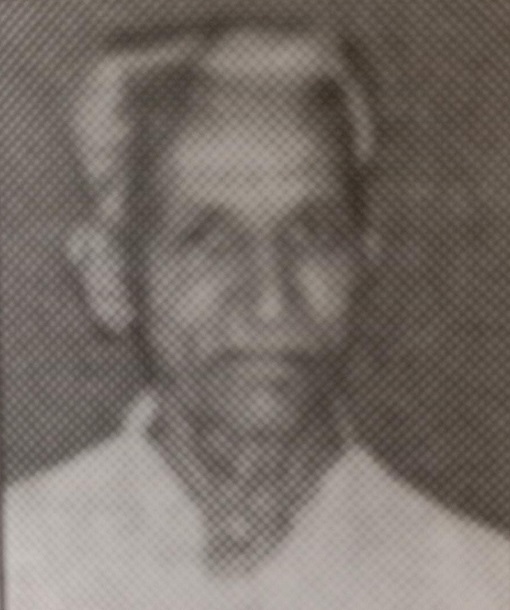People and Personalities of Raichur District
People and Personalities of Raichur District
The big stories often make the headlines of our historical narratives, but history is not only about the landmark events - it finds shape and character in the myriad events that led up to a flashpoint of change. An attempt to discover and document stories of people, events, and places linked to the freedom struggle of India at the micro level of the district has led to the creation of a Digital District Repository. Stories in this section can be broadly classified under - People & Personalities.
Krishnacharya Joshi
 A freedom fighter of unwavering spirit, Krishnacharya Joshi was born in the Raichur district in the present-day state of Karnataka.
A freedom fighter of unwavering spirit, Krishnacharya Joshi was born in the Raichur district in the present-day state of Karnataka.
Krishnacharya Joshi joined the Karnataka Sangh and participated in nationalistic events such as Ganesh Utsav and Naadhabba to strengthen the sense of patriotism among people. He was also involved in collecting funds for the upliftment of harijans during Mahatma Gandhi's visit to the district in 1930. Further, he worked closely with Swami Ramananda Tirtha in establishing and advancing the Hyderabad State Congress, which pushed for representative and democratic government in the princely state. He was also an active participant in the nationalist activities during the Quit India Movement.
On 15th August 1947, as the rest of India celebrated independence, the Hyderabad State Congress too resolved to hoist the national flag at Sultan Bazar in Hyderabad to express their demand for union with India. Joshi was one of the leaders of this brave action, and was thrown into jail by the Nizam’s administration. However, his wish for the merger of Hyderabad with India was ultimately fulfilled.
Krishnacharya Joshi made a great contribution to the freedom struggle in India, and to the liberation movement in Hyderabad. He continued to serve the nation even after independence, and was elected as a Member of Parliament from Yadgir in the First Lok Sabha.
Amareshwara Patil
 Amareshwara from Alkhod, the son of Hardeka Manjappa and Ningamma, wanted to join the Patiala Movement in the Indian Freedom Struggle. He attempted to create a sense of freedom in his village by shouting slogans against the government along with the elders at the local school. He was sent to Raichur to pursue education due to the fear of his family of him being disturbed. But his passion for the nation remained intact.
Amareshwara from Alkhod, the son of Hardeka Manjappa and Ningamma, wanted to join the Patiala Movement in the Indian Freedom Struggle. He attempted to create a sense of freedom in his village by shouting slogans against the government along with the elders at the local school. He was sent to Raichur to pursue education due to the fear of his family of him being disturbed. But his passion for the nation remained intact.
Amareshwara Patil was part of the team of freedom fighters who planned to siege the Nizam's government at the Yaregre police station. He made sacrifices for the cause of the nation.
Independence became more real after the Nizam of Hyderabad agreed to join the Indian Union. Post-independence, Amarneshwar Patil joined politics and served as a member of the Taluk Development Board, Director of the Primary Land Development Bank, President of Gram Panchayat, and President of the Agriculture Service Providers Association. He has been honored by the Government of India and the State Government. His name also appears on MHA Portal in the state-wise list of freedom fighters for the Samman Pension.
D. Pampanna Neravi
Always experimenting with the growth of organic farming and growing new crops, D. Pampanna. Neravi believed that “this life is a simple process that is constantly being processed in the face of flamboyant fighting”.
D. Pampanna Neravi was born in Devasugaru in the year 1930. His father was Nagappa. His mother and grandmother were supporters of the freedom struggle. As a child, he was influenced by Gandhiji and participated in the liberation struggle of Hyderabad. On 6th October, Gandhiji flagged down Jayanti and went to jail. Upon his release, he joined the Tungabhadra camp, descending into an underground movement and aggressively embracing the non-cooperation movement.
The attack on the Tungabhadra police barricade, the grenade bombing of the Ayurvedic Revenue Officer, and the bombing of the police station in the southern city of Barakapura, led to the escape of the police in the incident. The incident that took him to the camp was one of the many events that took him away from the Itagi of Yalaburga Taluk. His adventures, populist campaigns, and the movement's path in the Non-cooperation Movement led to the merger of the State of Hyderabad with the Indian Union. This secular struggle was a struggle of the people committed to democracy irrespective of the village or town. In this historical movement, D. Pampanna was embodied as a student and committed young man with the vision of a democratic nation.
At the last stage, the Government of India had imposed a financial crisis on the Nizam's province from June 16, when they joined the Adawani camp to assist with the inspection. In the end, the State of Hyderabad merged with the Union of India upon Nizam’s surrender on 12 September 1948 due to police actions such as 'Operation Polo'.
Later, Pampanna Neravi continued to protest, condemn, and convey the hardships of the peasantry. He became a leader of the farmers of the region. He is credited with participating in the struggle of farmers at the international stage. His desire was to grow the power of the peasantry into a national force, with the belief that only organic farming could make farmers profitable.
His name appears on MHA Portal in the state-wise list of freedom fighters for the Samman Pension.
Source :
- Indian Culture Portal
- Assistant Director, Kannada and Culture Department, Raichur
- Azadi Ka Amrit Mahotsav
Last Modified : 8/31/2023
Provides information related to People and Persona...
This topic provides information about People and P...
Provides information related to People and Person...
This topic provides information about People and P...
